教室
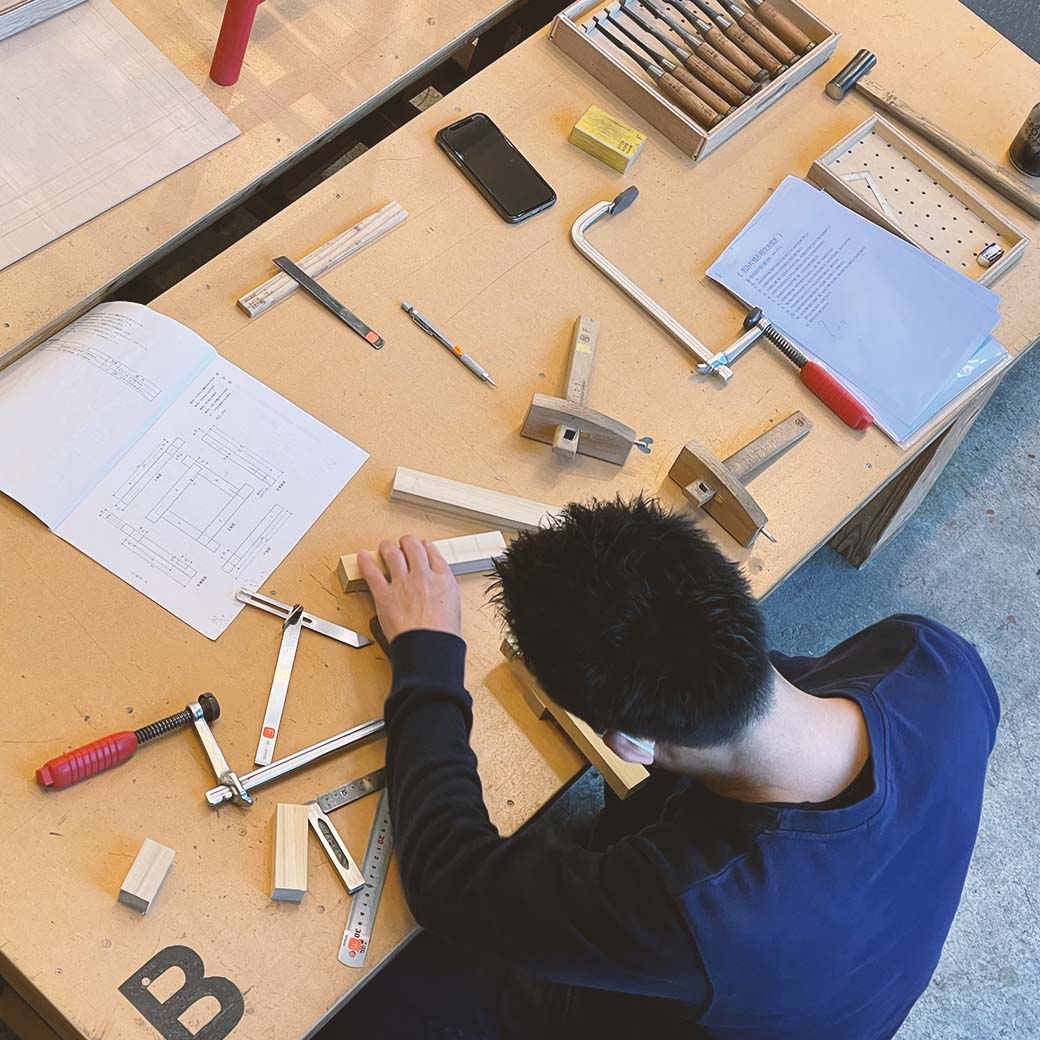
The “Basic Course in Handcrafted Furniture Making” is aimed at anyone, from beginners to experienced craftsmen, who want to learn the basics of furniture making.
Through the eight-lesson course, you will acquire a solid grasp of everything from basic woodworking knowledge to practical use of hand tools through lectures and practice.
The courses are taught by experienced instructors carefully. The “Basic Course in Handcrafted Furniture Making” begins with lectures on the basics of the wood we handle and hand tools such as planes and chisels, before moving on to actual woodworking techniques.
Learning the most basic yet difficult processing technique of joining pieces of wood, known as TSUGITE (joint), will deepen your understanding of woodworking, and by actually getting to work, you will be able to confidently try your hand at making authentic furniture.
Click here to apply for the “Basic Course in Handcrafted Furniture Making”, which will start in May-August 2025.
You can take the following courses.
・Basic Course in Handcrafted Furniture Making 1 (English course):Lectures, square timber joints
(※ Basic 1 will be held in English as the basic language.)
[Capacity] 8 students per class
[Application Deadline] May 3rd (Sat.) 17:00
[Course Fee] 119,800 yen * (131,780 yen including tax)
* Tuition fee and materials included
[Benefits] “Free Plan” applies from May 2025 to August 2025
*You can use the shared Woodwork Centers without paying the 88,000 yen (4 months’ Woodwork Center usage fee).
*The registration fee (5,500 yen) will be waived.
The basic courses are divided into ranks 1 to 4, and you start with course 1. After completing course 1, you will move on to course 2, and after completing course 2, then you will move on the course 3, so you will gradually level up to the next course.
Of course, you can take the same course twice.
Depending on your level, you can consider moving up the course rank or taking the same course again.
Please take this opportunity to learn the basics of wooden furniture making, fully experience the charm of woodworking, and hone your skills together with us. The details of each rank are as follows. They will be held in order.
Basic course 1 : Lectures, square timber joints
Basic course 2 : Square timber joints and miter joints
Basic course 3 : Legged product manufacturing (stool, oil painting)
Basic course 4 : Box manufacturing (small drawers, painting application)
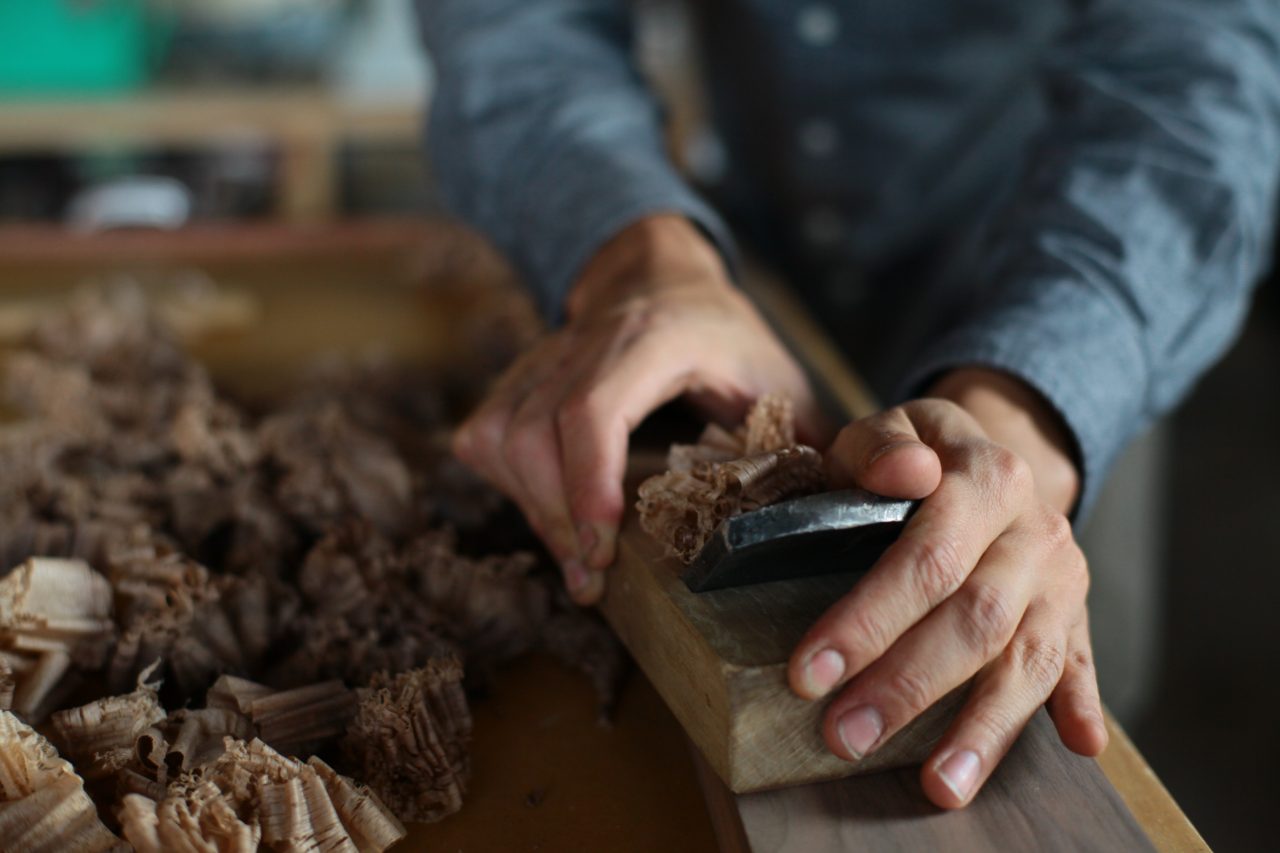
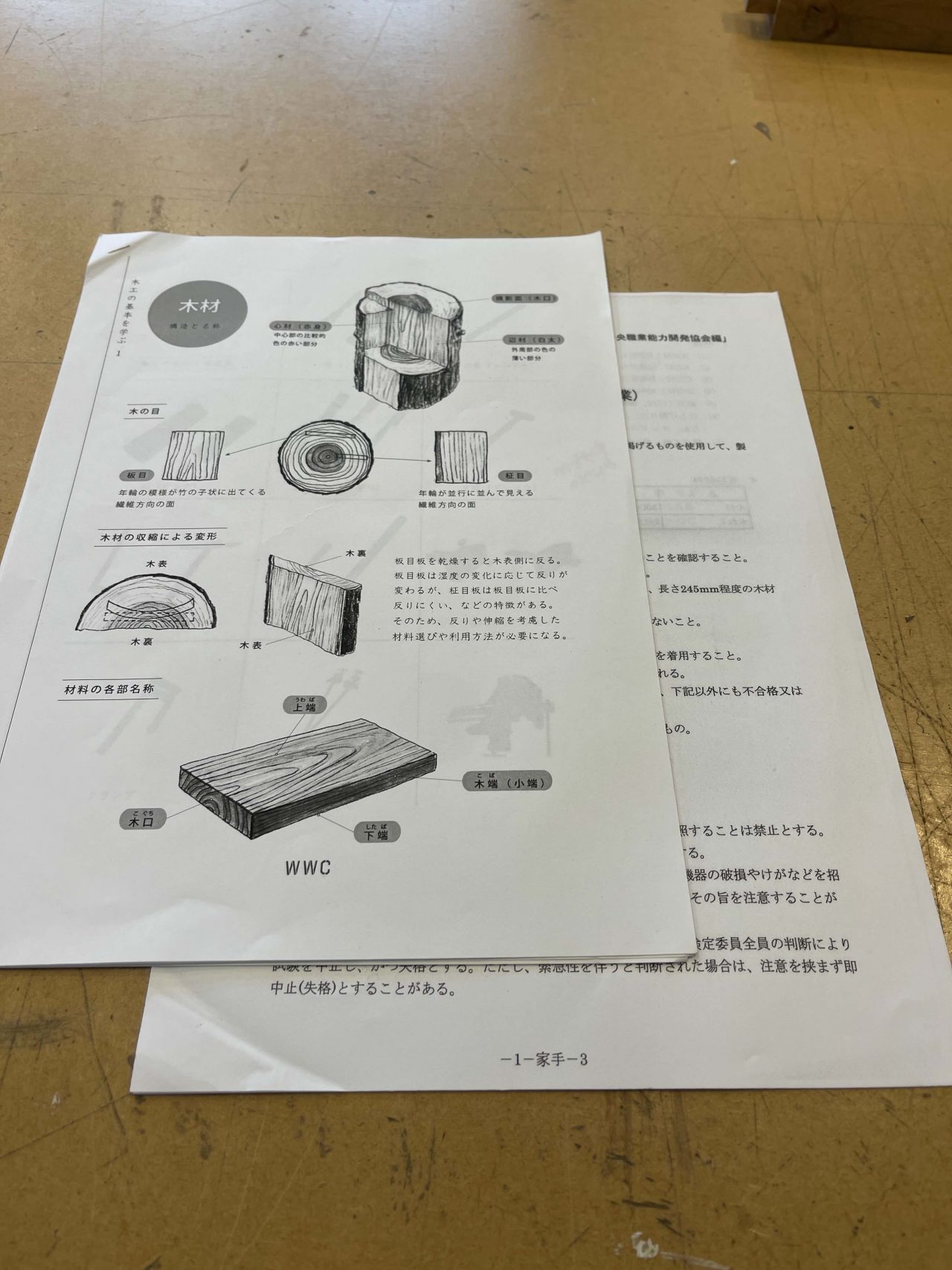
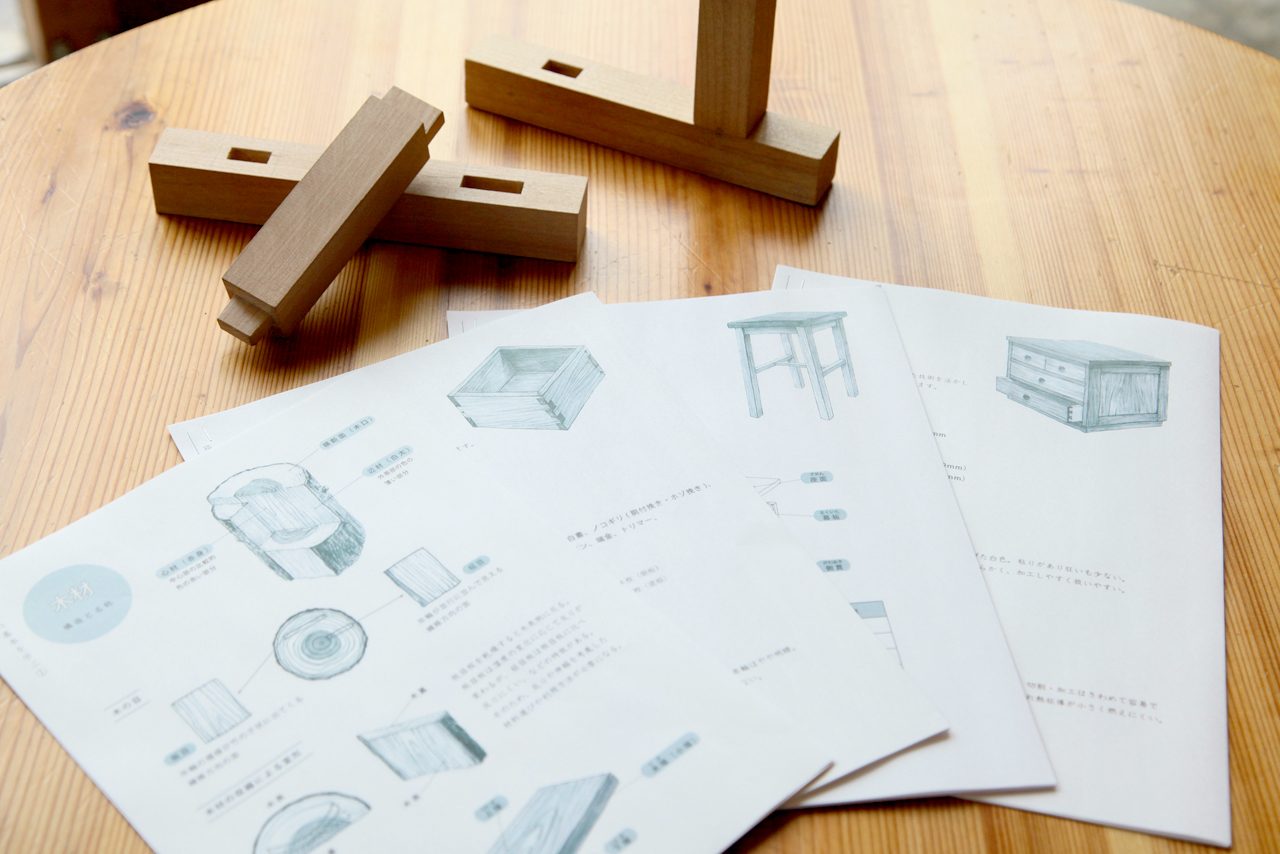
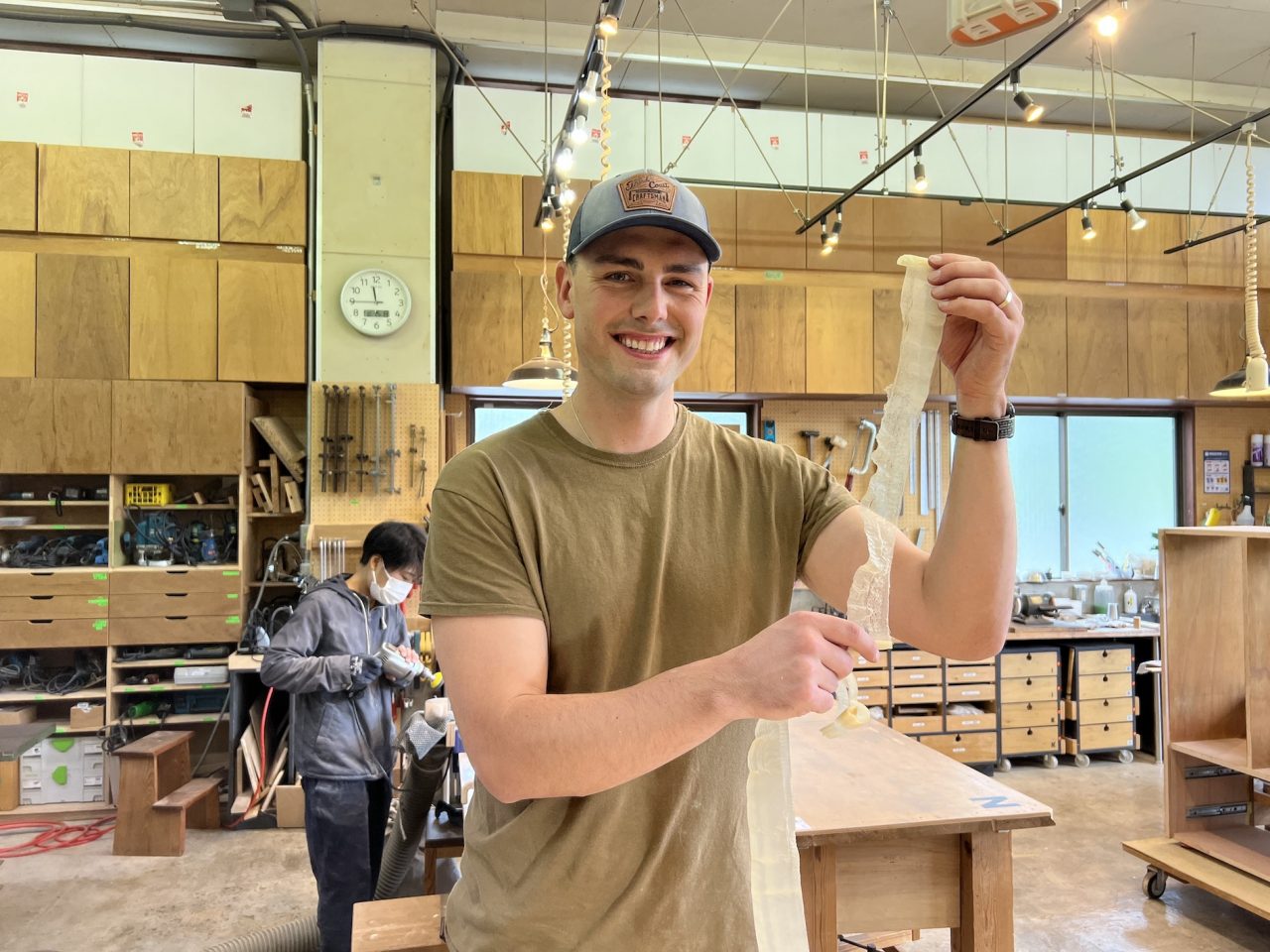
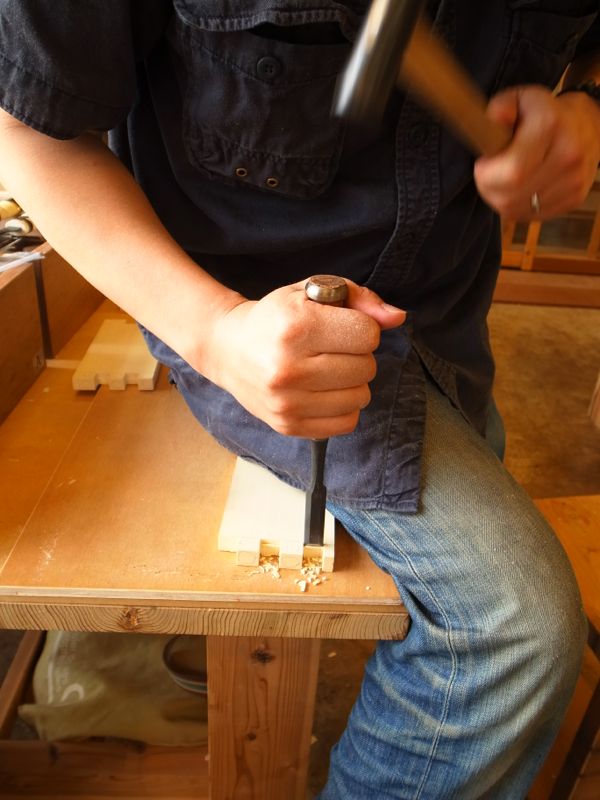
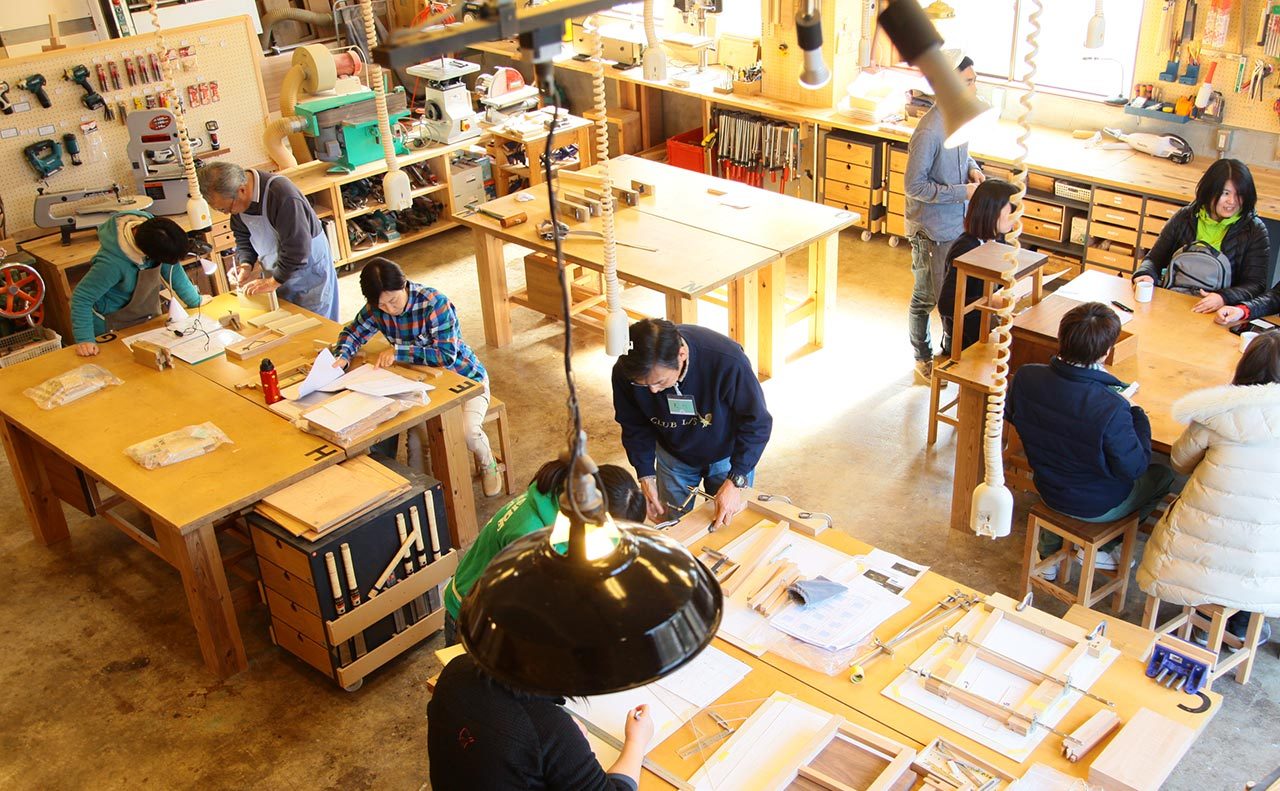
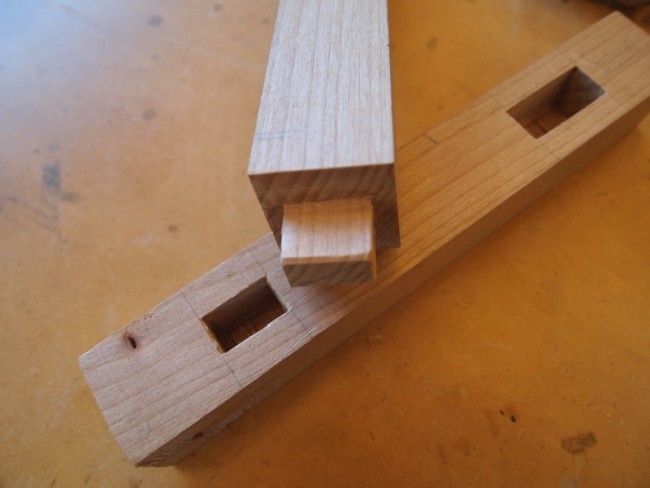
What is TSUGITE?
TSUGITE is one of the basic techniques for joining pieces of wood together. It is used to firmly join pieces of wood together, especially in furniture and fitting production and joinery.
In this Basic Course 1, you will learn the basics of woodworking through jointing (square joints) for joining square pieces of timber together as shown below.
1.相欠き接ぎ AIGAKITSUGI (MiterJoint)
A method of fitting two pieces of wood together by removing pieces from each other.
(Furniture manufacturing hand processing test Level 3 assignment)
2.包み方蟻相欠き接ぎ TSUTSUMI KATA ARIAIGAKITSUGI (WrappingMethod:DovetailJoint)
A method of joining in which a dovetail-shaped cut is made in one piece of wood and the other piece is wrapped around it. This is a dovetail joint that increases strength against pulling force and improves appearance. (Furniture manufacturing hand processing test Level 3 assignment)
3.二方胴付きホゾ接ぎ NIHOU DOUTSUKI HOZO TSUGI (Two-sidedTenonJoint)
This is the most common joint method, where a tenon (projection) is made on the end of one piece of wood and a mortise hole is drilled on the other to join two pieces of wood vertically.
(Furniture manufacturing hand processing test Level 3 assignment)
4.四方胴付きホゾ接ぎ SHIHOU DOUTSUKI HOZO TSUGI (Four-sidedMortiseJoint)
A joint with a mortise on all four sides around the tenon. It is stronger than a two-sided tenon joint, and the appearance is beautiful because the mortise holes are not visible.
5.楔締め通しホゾ接ぎ KUSABISHIME TOOSHI HOZO TSUGI (Wedge-fastenedTenonJoint)
A joint in which a wedge is driven into the end of the tenon. Since the tenon is less likely to come loose, it is often used for joints that are subject to dynamic loads, such as chairs.
Also, It serves as a design accent.
6.剣留めホゾ接ぎ KENDOME HOZO TSUGI (Sword-fixedTenon)
A joint with a sword-shaped front on a two-sided tenon joint. Used for Japanese and KARAKI furniture. A typical joint for Japanese joinery. (Furniture manufacturing hand processing test Level 1 assignment)
By learning the processing techniques while being shown the characteristics and usage examples of these joints, you will be able to join pieces of wood firmly and create beautifully finished furniture and woodworking items.
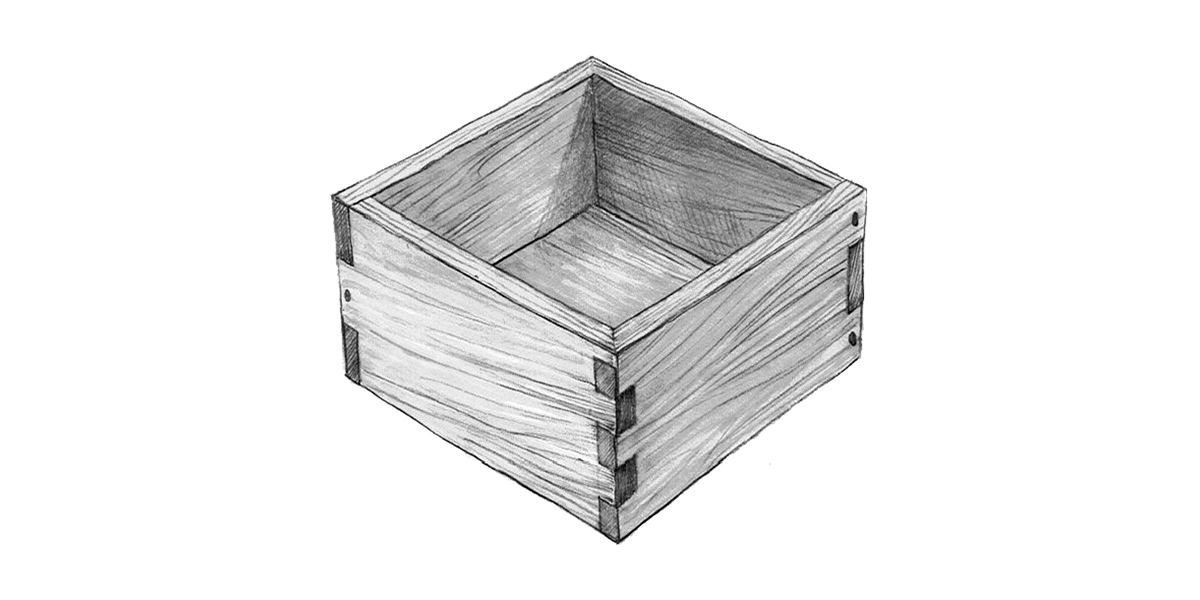
What is joint KUMITSUGI?
Joining is one of the basic techniques for joining pieces of wood together. It is used to firmly join pieces of wood together, especially in furniture and fitting production and joinery.
In this Basic Course 2, you will learn the basics of woodworking through jointing (square joints) to join the following boards together.
1.鉋について about Planes
You will learn about blades using the “flat plane”, one of the most common carpentry tools.
You will also learn how to adjust the plane and how to extend the blade, through the practice of planning a board.
2.3枚組接ぎ SAN-MAI KUNITSUGI (Three-piece Joint)
This is the Joint which the width of the board is divided into three equal parts at the end of the grain, and then each piece is cut away and joined together.
This is the most common joint.
3.上端留5枚組接ぎ UWABADOME GO-MAI KUMITSUGI (Five-piece Joint with Top End Stapling)
This joint is made by dividing the width of the board into five equal parts at the end of the grain, which are then cut away and joined together. The upper end (visible part) is then joined at a 45° angle.
This joint is strong and looks good.
4.蟻形3枚組接ぎ ARIGATA SAN-MAI KUMITSUGI (Dovetail Joint)
This joint has a dovetail shape on the tenon of a triple joint, allowing it to be inserted and removed from only one side.
Also known as a balanced joint. This joint is stronger than other joint.
5・6.包み蟻形組接ぎ TSUTSUMI ARIGATA KUMITSUGI ( Enclosed Dovetail Joint)
A joint in which the dovetail joint of a male timber is shortened and enclosed with a hole so that it cannot be seen from the visible surface (the front in the case of a drawer).
It is used to join the front panel and side of a drawer.
7・8.隠し蟻形組接ぎ KAKUSHI ARIGATA KUMITSUGI (Hidden Dovetail Joint)
A joint in which the dovetail joints between the male and female pieces are shortened to hide the joint.
The exterior looks like a covered joint, but the interior is dovetailed.
By learning the processing techniques while being shown the characteristics and usage examples of these joints, you will be able to join pieces of wood firmly and produce beautifully finished furniture and woodworking items.

In this Basic Course 3, you will make a wooden stool using the jointing techniques learned in Basic Courses 1 and 2.
While drawing full-scale production drawings, you will learn the structure and basic design methods of “legged furniture.”
Wooden seats are made and used with wide joints at the edges.
Through the finishing oil painting, you will learn about the types of furniture paint and the basics of finishing (surface preparation).
*More details will be provided at a later date.

In this Basic Course 4, you will learn how to make “box furniture” by making a small drawer using the joining and finishing methods you learned in Basic Courses 1, 2, and 3.
The drawers do not use rails or hanging bars like chests of drawers, but are made to fit the size of the space, like a paulownia chest of drawers.
The painting will be done with a brushed urethane paint, and you will also get to try out painting with methods other than oil and experience the differences in the finish (appearance and function).
*More details will be provided at a later date.
This course is held every other Friday.
please feel free to use the shared Woodwork Center to review or make your own creations between classes.
Basic Course in Handcrafted Furniture Making 1 (English course) ・Friday morning class
every other Friday (twice a month), 8 lessons in total, 9:00-12:00
(First class: every other week from May 9th (Friday) onwards)
※ You cannot change classes once you are enrolled.
※ There may be a transfer depending on the circumstances.
Tuition Fee
One-time payment: 119,800 yen (131,780 yen including tax)
Payment for this course must be made in advance by credit card.
Payment instructions will be provided after application.
*The above fee includes tuition fees and materials.
*Equipment rental is available.
*There is no discount if you bring your own equipment.
*There are no transfers.
…Benefits…
Participants in this course will receive the following benefits:
• You can use the shared Woodwork Center without paying the 88,000 yen (4 months’ Woodwork Center usage fee) and free registration fee
【4-month plan: 88,000 yen】+【Registration fee: 5,500 yen】 totaling 93,500 yen is included as a benefit.
*The benefit will be applied after payment of the course tuition fee. More detailed terms of use will be provided after application.
You are welcome to use the shared Woodwork Center freely during class period.
We think it is difficult to solidify skills just through this course time. Skills are solidified by repeated practice. With this in mind, we came up with this special offer with the hope that you will use the shared Woodwork Center to prepare and review, and also use the time to create your own works.
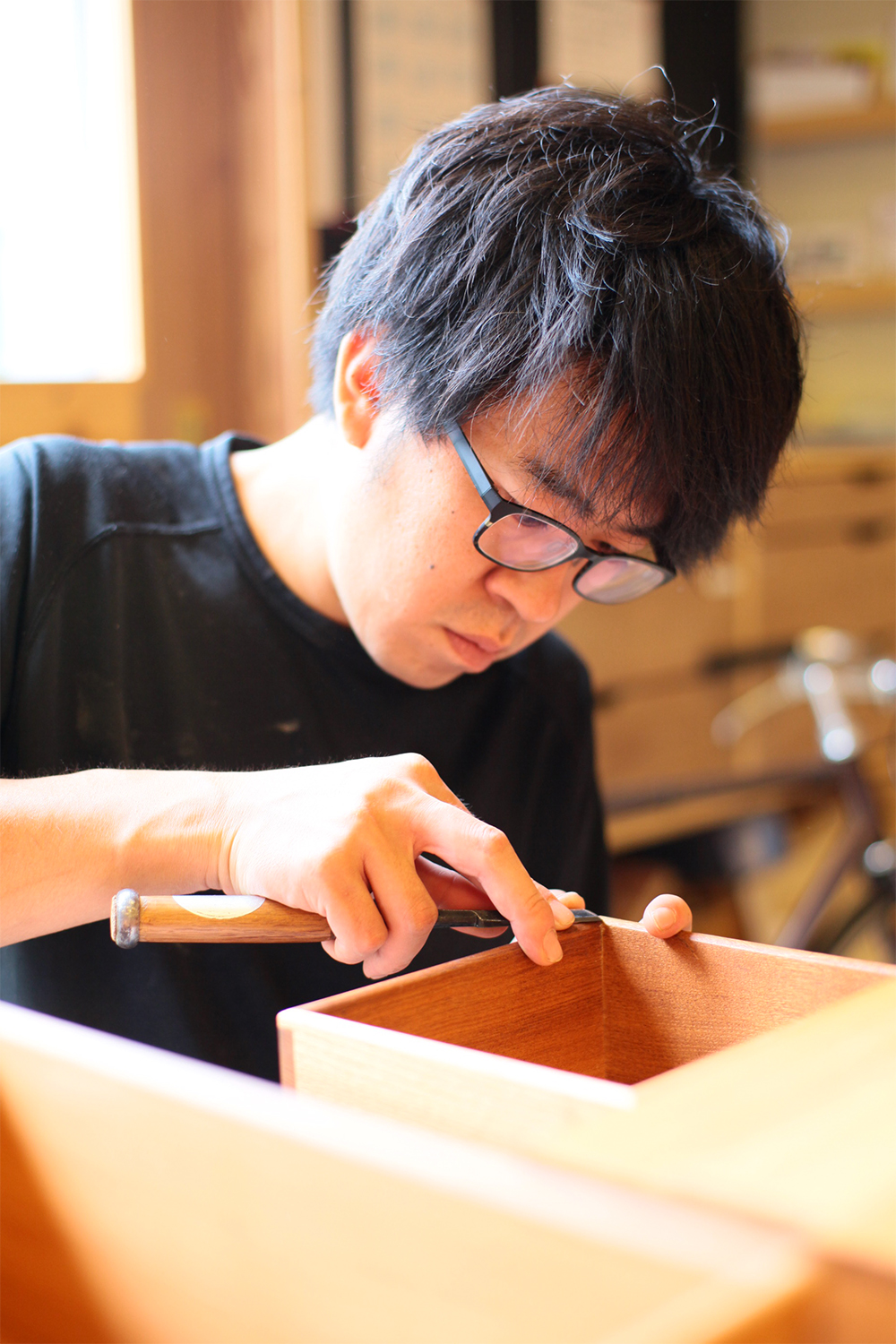
Shunsuke Tsuruda
Manager of WOODWORK CENTER Born in 1980 in Kagoshima Prefecture
Furniture production manual processing work 2nd grade technician Graduated from Hokkaido Tokai University, School of Art and Design, Department of Design
Hokkaido Prefectural Asahikawa Technical College, Department of Art and Design Completion
Green Woodwork Instructor Training Course 2023 Completion Kuwasawa Design School, Basic Design Major, 2024 Completion
1. Cancellationdeadline
• If you cancel 7 days or more before the course start date, you will receive a full refund.
• If you cancel after 7 days, no refund will be given.
2. Cancellationduringthecourse
There are no refunds for cancellations after the course has started.
3. Exceptions
Special circumstances such as illness or emergencies will be handled on an individual basis.
4. Make-upenrollment
There are no make-up enrollments.
Apply here for the “Basic Course in Handcrafted Furniture Making 1 (English course)”, starting which will start in May-August 2025.
*Applications will be accepted on a first-come, first-served basis. Applications will close as soon as the capacity is reached.
[Dates and times]
Basic Course in Handcrafted Furniture Making 1 (English course): ・Friday morning class
every other Friday (twice a month), 8 lessons in total, 9:00-12:00
(First class: every other week from May 9th (Friday) onwards)
[Capacity] 8 students per class
[Tuition fee] 119,800 yen * (131,780 yen including tax)
*Tuition fee and teaching materials included
[Benefits] “Free Plan” applies from May 2025 to August 2025
*You can use the shared Woodwork Center without paying the 88,000 yen (4 months’ Woodwork Center usage fee).
*The registration fee (5,500 yen) will be waived.
Notes:
◇If you cancel your participation after completing your application, a partial cancellation fee will be charged.
◇If you are applying with multiple people, please write this in the comments section.
◇Finish time varies depending on work situation.
◇Please arrive 10 minutes before the start time.
◇Please be sure to contact us if you are going to be late.
◇Please come in clothes suitable for work that are easy to move in and don’t mind getting dirty, or bring a change of clothes.
◇Please refrain from attending if you or your family are feeling unwell. ◇Wearing a mask is at the individual’s discretion.
How to get to the Woodwork CenterFor those using trains and nearby public transportFor those coming by car.
〒249-0003 1-8-3 Ikego, Zushi City, Kanagawa Prefecture, Matsunaga Heights 1F
TEL: 046-884-9581 FAX: 046-884-9582
Go from your current location on Google Maps
・17 minutes walk from JR Zushi Station.
Exit the west exit of Zushi Station and turn right on the street in front of you. Walk along the tracks for about 10 minutes, go under the Keikyu Zushi Line overpass and turn left at the first traffic light. Turn left at the first traffic light, then turn left just before the railroad crossing you can see in front of you. The hotel is on the 1st floor of Matsunaga Heights on your left at the end of the road.
・5 minutes by bus + 2 minutes on foot.
Take bus 30, 31 or 32 from bus stop 3 at Zushi Station East Exit Bus Terminal and get off at “Ikego Jujiro”. After getting off, go in the opposite direction of the bus and turn right at the first corner. The hotel is on the 1st floor of Matsunaga Heights on your right at the end of the road.
・7 minutes walk from Jinmu-ji Station on the Keikyu Zushi Line
. Turn right after exiting Jinmu-ji Station. Turn right at the end of the road and then turn right at the first corner. When you reach the tracks, turn left. Walk straight along the tracks for about 5 minutes and it is on the 1st floor of Matsunaga Heights on your left at the end of the road.If you’re heading
・From the city center
We recommend heading to Yokohama Station from Ikebukuro or Shinjuku, then transferring to the Keikyu Zushi Line at Yokohama Station.
When you get off at Asahina Interchange, turn left, then turn right at the first traffic light and follow the road.
Turn right at the T-junction at the end of the road called “Sanshin Housing Entrance”, go under the overpass of the expressway and continue straight for about 5 minutes. Turn right at the traffic light after Jinbutsu Station, turn left just before the railroad crossing you can see in front of you, and it is on the 1st floor of Matsunaga Heights on your left at the end of the road.
*There is no dedicated parking lot. Please use the nearby paid parking lot.
For both parking lots, the maximum fee for the day is 600 yen.
100 yen for the first hour after entering. 50 yen for every 30 minutes after that. (Free for less than 30 minutes after entering)
・Ikego no Mori Nature Park 8:45-21:15
https://goo.gl/maps/z1kcqLWfWgWwno1UA
*Cross the railroad crossing. It is located next to the athletics stadium and baseball field.
・Daiichi Sports Park 6:00-21:15
https://goo.gl/maps/jVZh11sFc9Wze4Lm8
Please see the FAQ:
https://soudankaguya.com/wwc/faq/
If you have any questions that are not covered in the FAQ, please contact us at the following email address:
contact@soudankaguya.com